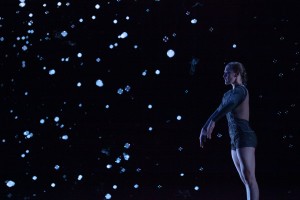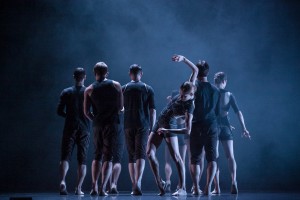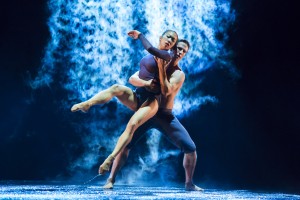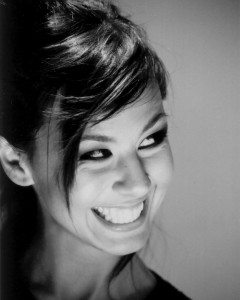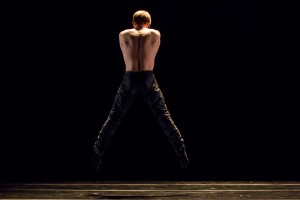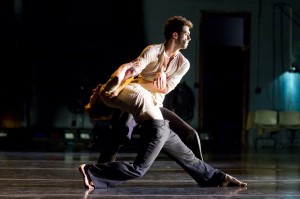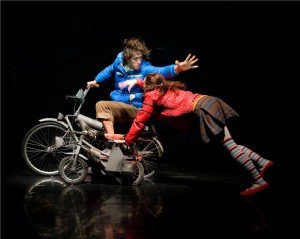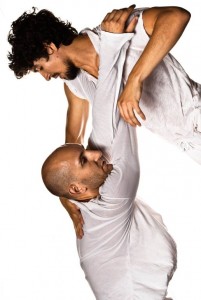
Benjamin Wardell and Michel Cintra.
It starts with two men working with 12 different choreographers separately, then they take the material and remix it. In the meantime, funds need to be raised, a venue found and confirmed and the final product created. Much like the mind behind The Nexus Project – it’s complicated. Benjamin Wardell is not new to the Chicago dance world. He danced with Hubbard Street Dance Chicago for four seasons in a wide range of works by Nacho Duato, Alonzo King and many by resident choreographer Alejandro Cerrudo, among others. After he left Hubbard Street, most thought he’d retired from dance and/or moved away. Lucky for us, he didn’t.
Before coming to Chicago, the Memphis-native danced for the Cincinnati Ballet and Alonzo King’s LINES Ballet. Now a freelance dancer (a touring stint with Azure Barton and Artists and currently with Lucky Plush Productions), he’s also teaching at Extensions Dance Center, Visceral Dance Center and occasionally at Lou Conte Dance Center. He’s the official videographer for Luna Negra Dance Theater and River North Dance Chicago as well as a freelance photographer. He also does repetiteur work setting piece from the Hubbard Street rep around the country and is in charge of the company’s summer intensive program in Iowa. “I’m all over the place,” he said. “For me, that’s great. My brain is in 20 places at once. Whenever I would get into a company, I would eventually feel compressed by the lack of variety. Even just going in the same building every day. Now, I’m in so may place that I stay calm to make sure I don’t forget anything. That lifestyle works better for my internal make-up.” For the upcoming project he’s teaming up with dancer Michel Rodriguez Cintro (of Hedwig Dances) and a dozen local choreographers for an exciting and ambitious project tentatively scheduled to premiere later this fall.
RB sat down with Wardell earlier this year to talk about his career, past and present.
Hubbard Street is currently in collaboration with Alonzo King/LINES Ballet. You’ve previously said that working with Alonzo for a long period of time is transformative and that it changes the way you dance. Is it also emotionally taxing?
Yes. He pushes really hard. The work is not particularly emotive, but it’s emotionally taxing because you’re always pushing really hard. He expects you to always be generating thought. In a way, your creativity with your movement maxes out, because he always wants it to be different every time and you perform the same piece like 130 times, but if you do it the same 2 or 3 times, he’ll call you out on it. “You need to explore that section of movement in a different way.” Part of the transformation was how to get creative doing the same movements and embracing the constant change. One of the good things is it prevents that subtle death of the choreography where it starts to look comfortable.
When you decided to leave Hubbard Street, what was going through your head?
I started to realize I wasn’t built for companies. It’s becoming easier to freelance and the sound of being in control of what I was doing was appealing. I thought it was pliable for me to do. I got to the point where I’d achieved all my institutional goals. At this point, I’d rather make something new that’s a “swing and a miss” than do a masterpiece that was made for someone else. I found myself at this place where I wanted to be generating stuff rather than learning choreography. That combined with I was getting into video and photo work and wanted to explore those avenues. I needed to be on my own in a way that I could do a lot of things. I had a vague thought about wanting to produce work, but that was the least part of my original plans.
Why did you call the new project The Nexus Project?
I’d been calling it the “Two Man Show” since it’s inception, but I though that was a little generic for product packaging. I talked to a friend of mine that does marketing and he said I should have an overarching name. “The Nexus Project” was the first thing I came up with. The idea for the project, having all the choreographers and an open rehearsal process for the second half, is that the two of us, rather than being in a bubble, are the crossing point for all the spokes.
How did you pick Michel?
He choreographed for The A.W.A.R.D.S. Show and I was like “who the fuck is this guy and how have I lived here for two years and not know him?” I saw Chino (Michel’s nickname) dance and was shocked that he would be in this city and I had no idea. So I introduced myself. I need to find another guy that I can share the stage with for an hour and be on even ground with and who is available to do the amount of rehearsals needed. That list was short, because of all the demands.
How did you pick the choreographers (*listed below)?
It took me three or four months to hash out the project, it was a pretty slow process. It started off with just wanting to explore male duets. So a two-man show, then I started to think about my particular strengths and weaknesses. I’m not good with or particularly good at generating movement. That was a bit tricky. So what if I work with other choreographers? What am I good at? Outside of dancing, my secondary talent or other interest is coordinating people and finding connections between disparate parts, partly because my brain exists in that place. The way that things connect is how I see thing. I love complexity, so I should make a complicated process, because I’m going to feel at home in it. It’s going to tap into my capacity spectrum. Part of it was wanting to deal with the hierarchy of dance. Every choreography has a different methodology, but the way dance gets made is essentially the same in terms of the choreographer coming into the room and being in charge and making a piece and then leaving. That basic structure doesn’t really change. I’ve never been in a process that has more choreographers than dancers. Let’s try that. And, frankly, I just like the number 12.
Is there a choreographic theme to the show?
No. This is one of the aspects of the show that I’m most proud of – the process. It wasn’t one of my goals, it’s something I realized had happened once the process was set. The 12 choreographers have that truly rare consequence-free environment. That have two dancers who can do pretty much anything they can come up with, who are willing to try whatever, from the most risky to the most strange. We will do whatever you ask us with zero judgment. They get 12 hours of rehearsal each and they get to keep the work, but they’ve given us permission to use them. The choreographers came from wanting to represent the community, to give credit to all the stuff going on. I want people to have total freedom. At the end of February, whether they’ve finished their piece or not, I’m done with that phase of the project and need to move onto the second, which is the remixing process, an open rehearsal process (for donors) and putting the show together. A big part of why the second part is open is that studio time is our favorite time as dancers and yet we never let anyone in.
What are your hopes for The Nexus Project?
In terms of the final show and guaranteeing it being not terrible, priority number one is “Don’t Suck!” Especially if you’re trying something new. It’s terrifying because this is all my little new idea and I haven’t had any experience with it aside from having a choreographer set work on me. The basis of the show that will make it at the very least not a waste of time, is that they’re going to come see some good damn dancing. You’re going to see two real good male dancers who are real good at dancing with each other and can hold a 60-70 minute show no matter what we’re doing. I felt like we would get better at dancing together more quickly if we had to work with a bunch of different choreographers than if we were spending the same number of hours just doing our own thing. It’s hard to avoid self-indulgence when you’re totally in charge. Having to go from style to style, I feel like we’ve gotten to know each other’s dancing fairly quickly.
For more details on The Nexus Project and to donate to the Kickstarter campaign (ends Wednesday, Jan. 23!) click here.
*Choreographers include: Harrison McEldowney, Francisco Avina, Autumn Eckman, Robyn Mineko Williams, Julia Rhoads, Penny Saunders, Ron De Jesus, Jonathan Meyer and Julia Rae Antonick (Kechari), Nicolas Blanc, Jonathan Fredrickson, Matthew McMunn and Daniel “Brave Monk” Haywood.

